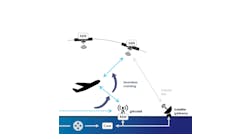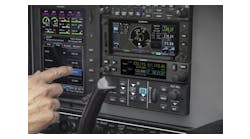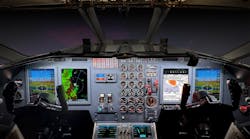The influence of the aftermarket services on today’s commercial aviation industry is undeniable. The most recent statistical data indicates that the spare parts market has grown by over $5 billion in 12 years’ time and now accounts for almost half of $54 billion worth MRO market. However, despite the impressive growth, the segment has still a lot of challenges to overcome, especially the ones related to spare parts pricing transparency.
With the introduction of new generation aircraft as well as increasing retirement of the older ones, the aircraft spare parts market has changed profoundly over the last years. With the OEMs gaining an increasingly large share of the MRO market on the one hand, and increased availability of spare parts from dismantled aircraft on the other, the segment currently comprises a variety of different types of players acting as suppliers. At the same tame, however, the market is still very scattered and thus remains largely opaque and insular to both buyers and suppliers.
According to Zilvinas Sadauskas, the CEO of Locatory.com, this has contributed to the fact that there is still lack of a proper spare part pricing strategy within the market: “As a result, nearly everyone has an example of a part the size, technology or material of construction of which suggests one level of price but the invoice turns out to be quite expensive, leaving the customer perplexed.”
One of the most recent examples of issues stemming from such a lack of transparency is Sikorsky Aircraft, which has agreed to pay $3.5 million to settle allegations that the company, which makes Black Hawk helicopters, failed to disclose accurate and current prices for parts. This resulted in the government paying artificially high prices for helicopter repairs for more than 3.5 years.
Of course, as the new generation aircraft gradually replace the older ones spare parts represent an important profit area for OEMs. According to Accenture, it makes up approximately 10% of total sales and up to 50% of net income and the numbers are constantly growing. As a result, it is natural that during the early phase of new product introduction most competitors will follow the price set by the manufacturer. However, later on much of the cost is usually caused by the lack of competition and availability of alternate sources, as well as lack of relevant information on particular parts. “Therefore, currently the goal is to align thousands of parts with a price that meets the customers’ perception of value,” says the CEO of Locatory.com.
Since the OEMs have recently been increasingly relying on aftermarket support to offset their declining revenues from new product sales, it has resulted in significant year-on-year price increases for original spare parts, as well as in restrictions on use of PMA parts. Moreover, some have even tried to buy back used products in order to reduce the possible competition. However, the OEMs unwillingness to disclose relevant information on component prices often leads to suppliers simply being unable to set the prices adequately.
This is not the only reason why price-relates issues may arise. For instance, currently the increased availability of surplus parts has been having more impact in the spare parts market, accounting for $3 billion per year and growing at a rate that costs the overall aftermarket parts market 1% annually. While this certainly opens new opportunities for all the players of the aviation spare parts’ market, many suppliers are simply unaware of the real values of the parts they offer.
“Firstly, there are parts that are currently out of production and are simply circulating in the aftermarket. And then one has to keep in mind a large amount of different component modifications, which can be acquired through aircraft dismantling. If the supplier doesn’t have the data to evaluate a particular part, he might check its pricing in the market, but if it ranges from $5000 to $15 000 it is obvious the market cannot be trusted as well,” explains Zilvinas Sadauskas. “Therefore the industry must turn to appropriate ERP applications and other IT solutions, which would enable to store and manage all the relevant historical data. Various e-procurement platforms, offering the possibility to trace and provide such information to the potential buyers are also a viable option. In other words, ensuring traceability of all the component-related information is a top priority to all the industry players. Achieving that would contribute to a more balanced and beneficial market.”
About Locatory.com:
Locatory.com - is an IT company supporting the aviation industry with IT-based Supply Chain Optimisation solutions worldwide. The company develops and maintains its own trading platform catered specifically to the aircraft spare parts aftermarket while offering proactive customer support and enhancing the industry with effective supply chain management solutions.
Locatory.com is a part of Avia Solutions Group - a WSE-listed company with more than 17 subsidiaries providing global aviation business solutions covering everything from aircraft maintenance and repair, crew training, technical training to ground handling, crew leasing, and other aviation related services.
For further information please visit www.locatory.com



